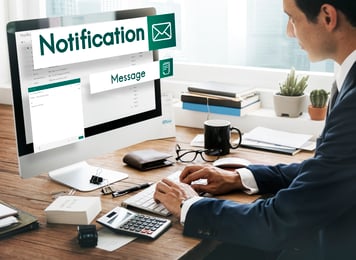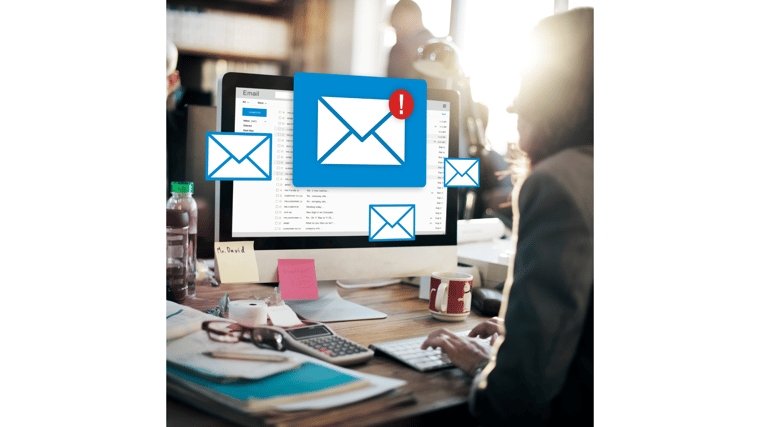In an era dominated by digital communication, email remains a critical tool for personal and professional interactions.
However, the widespread use of email also makes it a prime target for cyber threats, including phishing and spoofing. To combat these attacks, email security protocols have emerged as crucial elements in the fight against unauthorized access and malicious activities.
Understanding how these protocols contribute to a secure email ecosystem and implementing a combination of them is essential for businesses wanting to protect their sensitive communications and create a resilient, trustworthy email environment. Without any security protocols, you run the risk of exposing your sensitive information.
Read: Email Security Best Practices You Should Follow
Why Should I Implement Email Security Protocols?
Before we discuss the five email security protocols, let’s review some benefits of implementing these protocols.
- Confidentiality: Emails often contain sensitive information, like personal, financial or business data, that should be protected from cyber criminals and hackers. Without appropriate measures, attacks can intercept and read your messages. Implementing robust email security protocols can guarantee that your messages stay confidential and safe.
- Integrity: Email integrity refers to an email’s ability to retain its original content without being altered or compromised during transit. Cyber criminals try to modify emails, but email security protocols help prevent these attacks by verifying the message’s integrity before it arrives.
- Authenticity: This refers to ensuring that an email comes from its claimed origin. Establishing trust between senders and receivers means verifying that a message came from a legitimate sender and not an imposter, especially in phishing or spoofing attempts.
- Availability: Email security protocols ensure that email systems are available and usable. Targeted systems can be disrupted, resulting in downtime, lost productivity, data loss and reputational damages. Having secure email protocols proves that your company takes email security seriously.
- Compliance: Many industries must comply with regulatory requirements and compliance standards, especially when it comes to protecting sensitive information. Robust email security protocols often help meet these requirements and avoid fines and penalties.
Sender Policy Framework (SPF)
SPF is an email authentication protocol that helps prevent email spoofing and phishing by validating the authenticity of the sending server. Domain administrators set a list of authorized mail servers permitted to send emails on the domain’s behalf. The SPF list of authorized mail servers, or IP addresses, are Domain Name System (DNS) records that contain information about the servers; it helps prove that an email was sent from the correct server, which helps prevent unauthorized parties from sending messages that appear to be from legitimate domains.
SPF has three core elements:
- A policy framework, which defines the rules for verifying the authenticity of email senders and outlines what should happen when an email doesn’t comply
- An authentication method, which is used to determine if the sender’s domain is authorized to send email on the domain’s behalf and authenticate the sender’s identity
- A specialized email header, which conveys the information related to the SPF check and helps the recipient’s email system make informed decisions about whether to accept or reject the email.
When an email is sent, the receiving mail server checks the SPF of the sending domain during the email delivery process. If the sending server’s IP address matches one of the authorized IP addresses listed in the SPF list, the email is considered legitimate and is sent through. If there is no match, the receiving server takes appropriate action, like rejecting it or sending it to spam.
Domain Keys Identified Mail (DKIM)
DKIM is another email authentication method that helps ensure the integrity of email messages by allowing the sender to add a digital signature via cryptographic keys to outgoing emails. Unlike SPF, which works with IP addresses, DKIM relies on public and private keys, making it a stronger authentication protocol that can help prevent spam and phishing.
DKIM identifies if the email header was changed since the message was sent or if the message was altered or tampered with during transit. It also helps detect forged sender addresses and validate that the correct domain was authorized to send the message. In other words, it validates that the sender is who they claim to be and that the message has not been compromised.
When an email is sent, the email server uses a private key to generate the digital signature, which is included in the message header (the private key is only accessible to the domain’s owner). The receiver’s email server then uses a public key, which is published in the sender’s DNS records, to decrypt the digital signature and validate the sender and the message content. Once the message is authenticated, it will be delivered to the sender.
Domain-Based Message Authentication, Reporting and Conformance (DMARC)
DMARC combines SPF and DKIM to provide a comprehensive email authentication and reporting framework to help prevent spoofing and phishing. Most importantly, it allows domain administrators to set policies for how email servers should handle messages that fail SPF or DKIM checks.
DMARC lets you see if an email was legitimately sent by the person who claims to have sent it (the authentication part); if the message doesn’t pass the DMARC test, it’s handled with the DMARC policy set by the receiver (the conformance part); and it provides senders reports on email authentication failures and how they were handled, providing valuable insights into potential abuse or security threats (the reporting part).
To create a DMARC record, you must have SPF and DKIM protocols in place. Once an email server receives a message, it performs SPF and DKIM checks for authentication by comparing the “from” head domain name and the “envelope from” domain name. However, for a message to pass DMARC authentication, it must pass DKIM and/or SPF; if the message passes one but fails another, it still gets delivered, which is why you should have all three measures in place. If the message fails both checks, the server then checks the DMARC policy to determine how to handle the message.
Three policies exist for DMARC:
- Policy = (p=none), which is when no action is taken and the message is delivered as usual
- Policy = (p=quarantine), which is when the message is sent to spam or junk folders
- Policy = (p=reject), which is when the message is sent back to the sender
Transport Layer Security (TLS)
TLS is a cryptographic protocol that encrypts email communications during transit between clients and servers, preventing eavesdropping, man-in-the-middle attacks and tampering. It replaced Secure Sockets Layer (SSL) and is mostly used to encrypt streams of network traffic and webmail messages between clients and servers, although it can be used to encrypt email messages.
TLS requires the installation of a TLS certification. From there, TLS establishes a secure communication channel between the client and server through a “handshake,” which is when the client and server exchange cryptographic keys; all data transmitted between the two is then encrypted.
Secure/Multipurpose Internet Mail Extensions (S/MIME)
S/MIME is an end-to-end encryption protocol that secures email communications with digital signatures, which add an extra layer of authenticity to the sender’s identity. It enables users to encrypt their email content, ensuring that only the intended recipient can decrypt and read the messages. However, the email headers are not encrypted, so cyber criminals can see who sent the message and who the intended recipient is.
Email clients implement S/MIME, which requires a digital certificate to authenticate and send encrypted emails. This provides a secure way of sending and receiving email messages, helping secure them against eavesdropping.
Other Protocols
If you’re looking for additional means of encrypting email messages, consider looking into these extra protocols:
- SMTP Secure (SMTPS)
- SMTP Mail Transfer Agent Strict Transport Security (SMTP MTA-STS)
- Open Pretty Good Privacy (OpenPGP)
- Post Office Protocol (POP3)
- StartTLS
- Digital certificates
Thriveon Can Help
At Thriveon, we understand how important it is to protect emails from hackers and cyber criminals. That’s why we offer managed IT and cybersecurity services to keep your emails safe and secure.
Schedule a meeting with us today and find out more.

